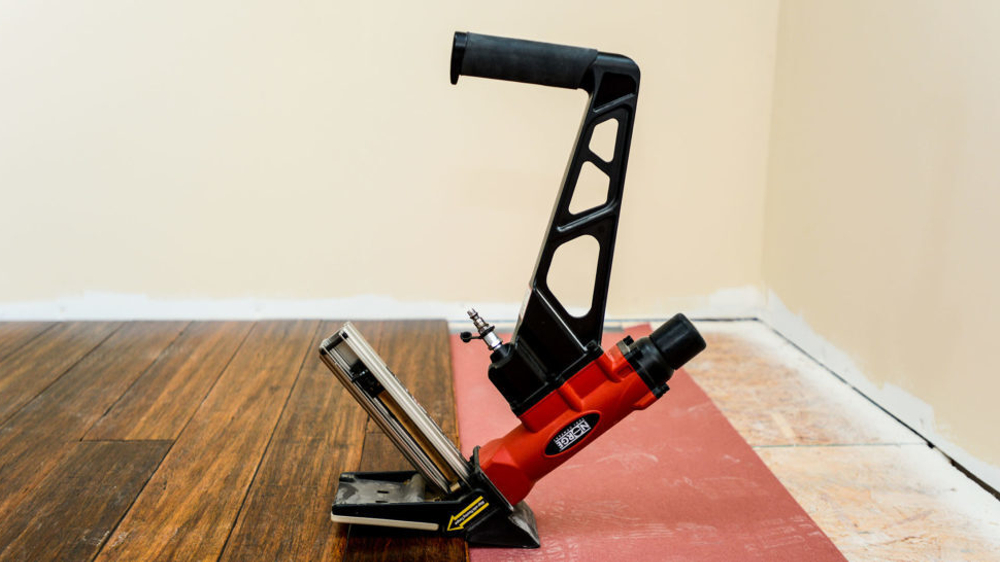Anyone looking to install new flooring has a lot of options. From wood to tile to laminate, the possibilities seem endless. To make things more confusing, some of the terms appear to be similar, such as engineered flooring and laminate. Both sound like something man-made, and this may lead people to wonder if they are in fact the same material. The two products are radically different in manufacturing, appearance, and durability. Understanding the difference between all products means you’ll make the right choice for your floor.
Engineered Wood Flooring

Engineered wood flooring may sound like a man-made material, but it’s actually made of real hardwood. The difference between engineered hardwood and solid hardwood is that unlike solid planks which are made from a single piece of wood, engineered wood floors are made up of several layers with a long-wearing, hardwood veneer on top.
The different layers of the floor are positioned so that the grain runs in different directions. This provides the flooring with superior stability. In fact, Nydree Flooring is up to 300% stronger than standard wood floors. With acrylic infusion, not only are the boards more scratch resistant, they withstand the elements better. When solid wood absorbs water, it has a tendency to swell, but with the different layers running in opposite directions to one another, they can’t all swell the same way. This means that the floor is more stable, and can be used in damp environments such as basements and other below-grade installations.

Engineered wood flooring uses the same wood base as its veneer and solid wood alternatives. So, you can find the same colors, wood species, textures, and styles that you’d also find in solid wood. An engineered wood floor looks and performs a lot like a solid wood floor, with the added benefit of being more stable in damp environments and being able to be installed below grade.
Most engineered wood floors come with a long-wearing factory finish, but if they do become scratched or marked, the surface can be sanded down and refinished just like any other wood floor. This is beneficial in high traffic areas and ensures that the floors will last for decades.
Engineered wood floors can be installed in a few different ways, including nail down, glue down, and floating, interlocking installations. These options mean that you can install it in more areas, including over concrete.
Laminate Flooring

Laminate flooring may be made to look like wood, but it’s actually made up of several layers of melamine resin and fiber board that have been laminated together. The top layer is usually a photographic printing to make the planks resemble wood. This layer is usually encased in a clear protective coating to help prevent damage to its appearance.
Unlike engineered wood flooring, laminate floors contain no hardwood, despite what they may be made to look like. In addition, laminate floors have no protection from moisture; if installed below grade or in a damp area, the many layers of resin and fiberboard have a tendency to swell, which can cause buckling and warping of the floor. And unlike wood, which usually contracts again once the moisture has dried out, once laminate swells, it is permanently warped and must be replaced.
Laminate floors are usually installed in a click-lock fashion, which makes them popular with DIY installers. They can’t be used below grade, however, and a precise expansion gap needs to be maintained around the perimeter of the installation at all times in order to help control swelling and warping of the boards.
If the surface of a laminate plank were to become scratched or damaged, it cannot be fixed. In fact, the most common way to fix a damaged plank is to start at the wall and remove all the planks until you come to the damaged one. The damaged plank is then replaced, and the rest of the planks reinstalled. This can be time-consuming and expensive in trying to keep the floors in good condition long term.
Newer laminates will wear longer than older versions but still susceptible to moisture. They come in a wide range of styles and sizes, as well as colors that can help you recreate the look of a wood floor if desired.
Choosing the Best for Your Project
Engineered hardwood flooring is designed to last 50 years or more, and during that time it can be refinished and installed below grade, as well as in a click-lock installation. Laminate flooring is designed to last 20–30 years, and cannot be refinished if damaged. It can only be used at or above grade, but can also be installed in a click-lock fashion that’s easy for DIYers. Both floors can give you the appearance of hardwood but only engineered wood floors gives you a solid hardwood veneer over a stable core.
Picking out flooring for your space takes time and careful consideration. Understanding the difference between these options means you’ll make the right choice for your flooring.
